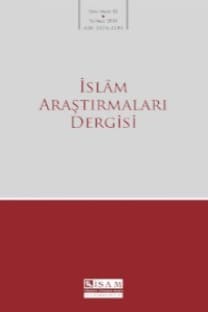Muslim Qur’ānic Interpretation Today: Media, Genealogies, and Interpretive Communities
Johanna Pink, who is mainly interested in modern Qur’anic exegesis and translations, attempts to draw a panorama of the different interpretations of the Qur’ān between 2000 and 2016 in her book Muslim Qur’ānic Interpretation: Media, Genealogies and Interpretive Communities. She seeks to provide an outline of different interpretations from many regions of the Muslim world, extending from Indonesia to Egypt, from the United States to Iran, and from Turkey to Saudi Arabia. At first, Pink discusses the increasingly central position and function of Qur’anic exegesis in the contemporary period. The author underlines that exegesis had a more modest place in the hierarchy of classical religious sciences and manages to examine its positioning in the classical period with much clarity. In the second chapter, Pink emphasizes that the context-oriented approach of classical tafsir has undergone a text-centered transformation in line with that of Ibn Taymiyya’s approach. Thereafter, the author discusses the impact of this transformation in the contemporary Arab world, especially through various abridgments and editions of Ibn Kathīr’s tafsīr.
Keywords:
Johanna Pink, Qur’ān Modernism,
___
- Pink, Johanna, Muslim Qur’ānic Interpretation Today: Media, Genealogies, and Interpretive Communities, Sheffield: Equinox, 2019.
- ISSN: 1301-3289
- Yayın Aralığı: Yılda 2 Sayı
- Başlangıç: 1997
- Yayıncı: TDV İslâm Araştırmaları Merkezi
Sayıdaki Diğer Makaleler
Bir Devvânî Muhalifi: Ebû İshak en-Neyrîzî ve Risâle fî tahkīki hakīkati’l-ilm Adlı Eseri
İslam Medeniyetinde Anayasal Kriz: Büyük Fitneden Arap Baharına
Türkiye’de Üniversite ve Yüksek Öğretime Dair Telif Eserler (1980’den Günümüze)
Rivayet, Anlam ve Yorum: Mantar Hadisinin Serencamı
Çağdaş Batı Literatüründe Kur’an Metnine Yaklaşımlar -Metin Bütünlüğü Arayışları-
